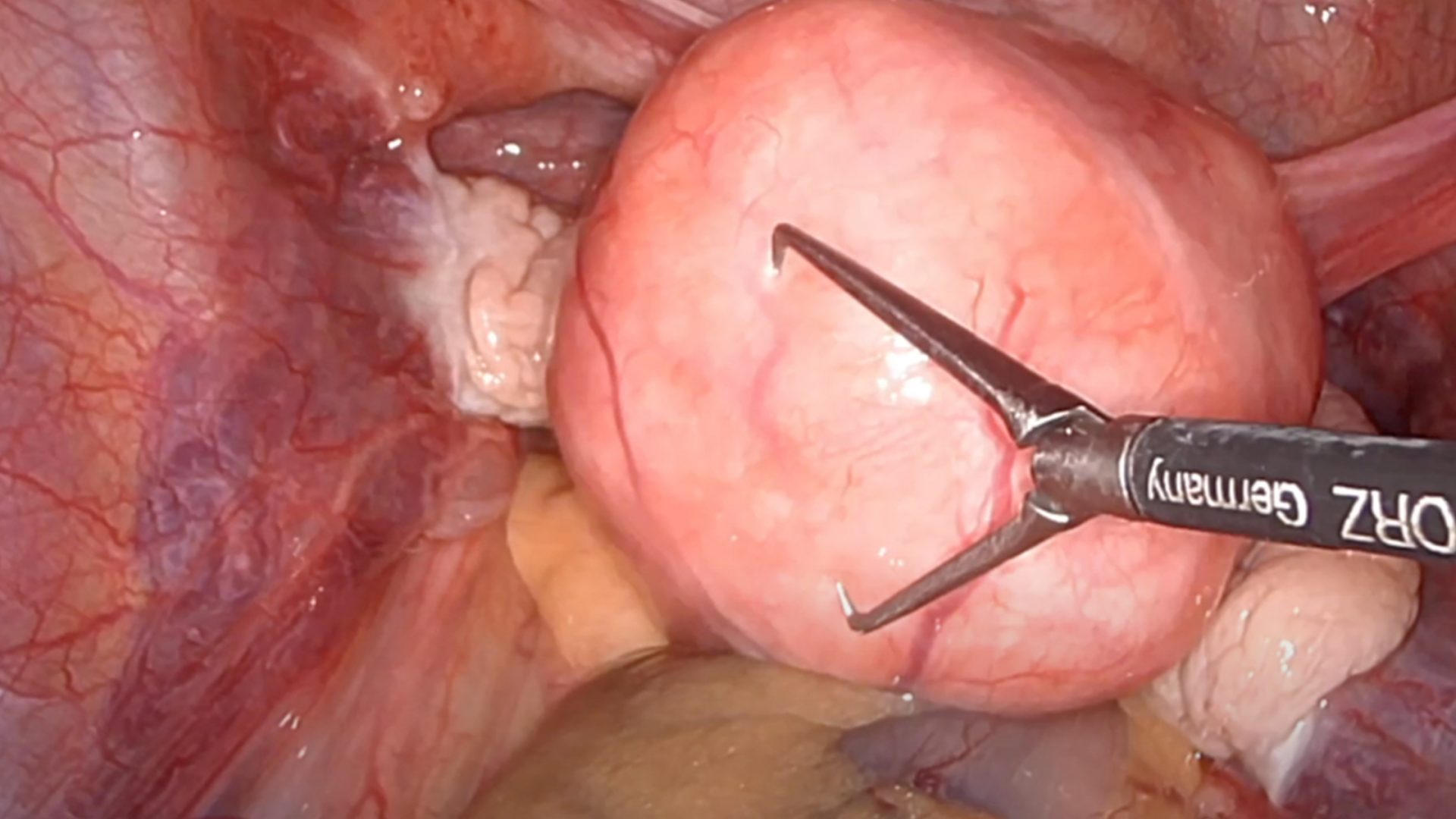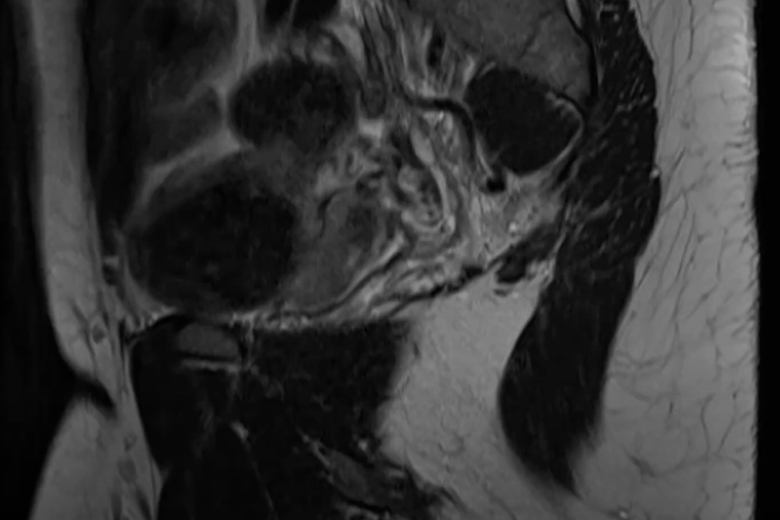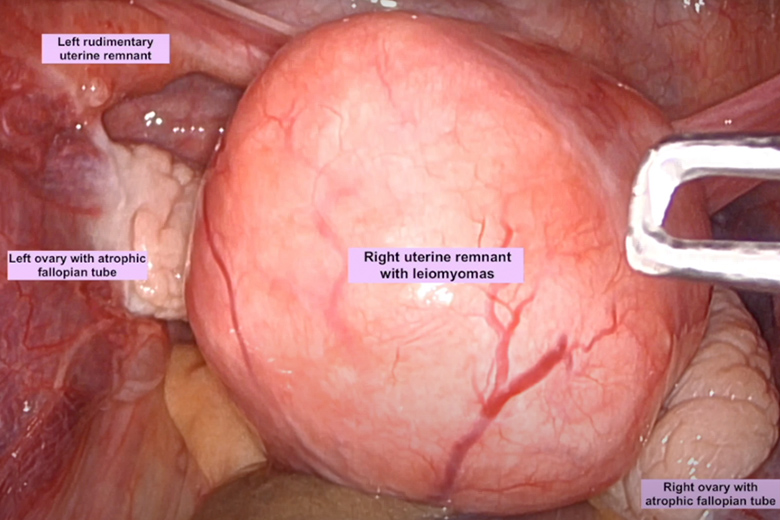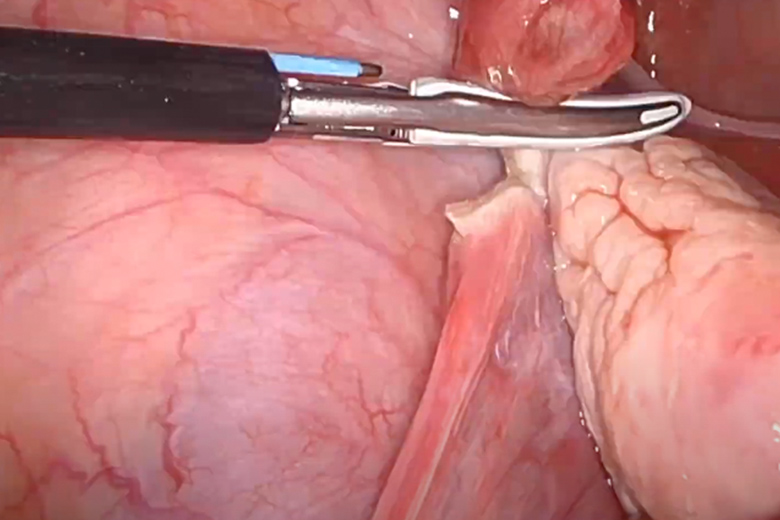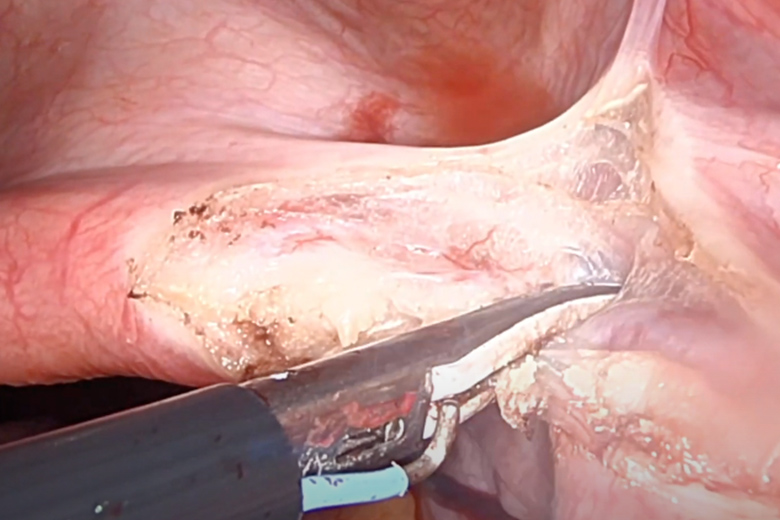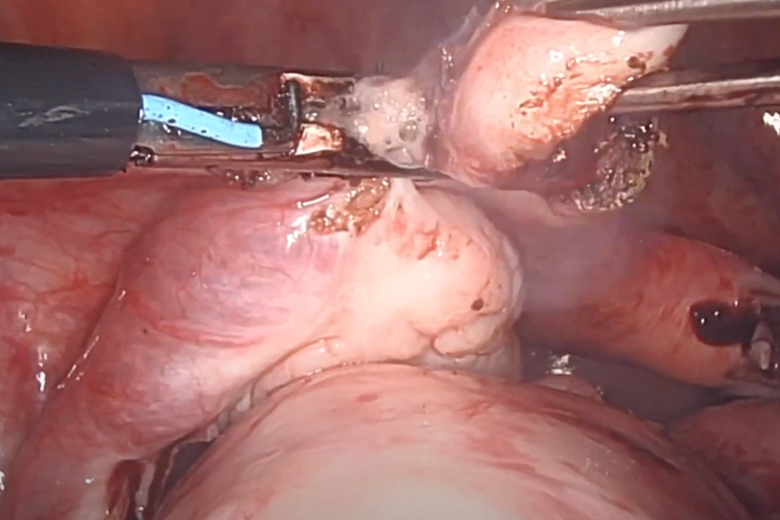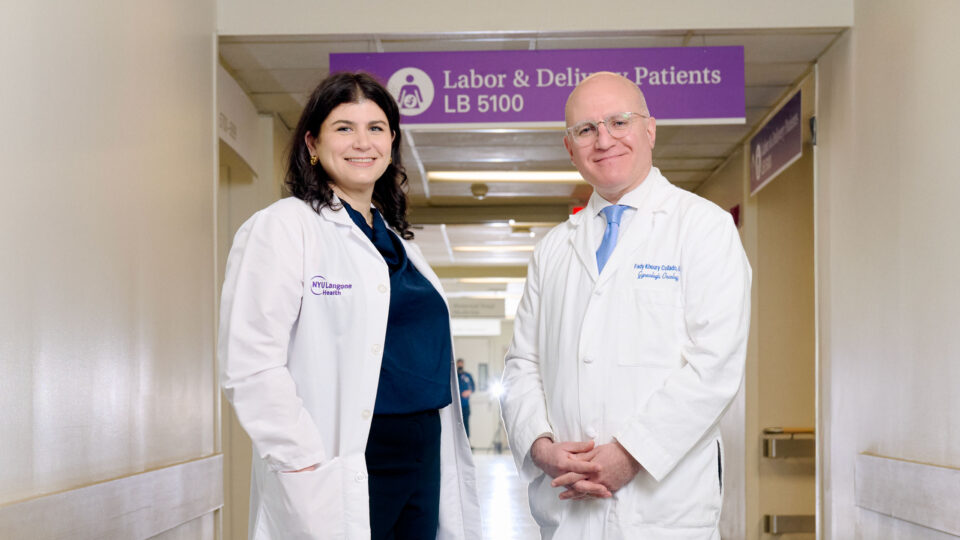Common Fibroids with a Rare Presentation
A 44-year-old woman with a recent diagnosis of Müllerian agenesis presented with worsening lower abdominal fullness and discomfort in the setting of known leiomyomas. Müllerian agenesis, a rare condition in which the Paramesonephric ducts do not develop in female embryos, is frequently associated with the presence of rudimentary uterine structures or remnants.
An examination revealed a 12-centimeter immobile mass over the patient’s lower abdomen. A pelvic MRI—the most sensitive diagnostic tool for identifying uterine remnants—further characterized the presence of a 4-centimeter uterine remnant with three dominant leiomyomas.
“Although up to 70 percent of women experience leiomyomas by menopause, only 15 cases have been published for women with uterine remnants,” notes Taraneh Shirazian, MD, a minimally invasive gynecologic surgeon subsequently consulted by the patient. Dr. Shirazian serves as director of NYU Langone Health’s Center for Fibroid Care. “These cases demonstrate the aggressive pathophysiologic nature of fibroids, which can grow and become symptomatic from just a few myometrial cells.”
“These cases demonstrate the aggressive pathophysiologic nature of fibroids, which can grow and become symptomatic from just a few myometrial cells.”
Taraneh Shirazian, MD
In light of her worsening symptoms, the patient opted for minimally invasive surgery to definitively manage her condition. A preoperative plan included diagnostic laparoscopy, removal of the uterine remnant with leiomyomas, a bilateral salpingectomy if tubes were noted, and cystoscopy, required by protocol. “Ideally, we want to remove the entire remnant itself, leaving no myometrium for possible recurrence,” says Dr. Shirazian.
Following surgery, the patient was discharged on the same day and has experienced complete resolution of symptoms. Importantly, the Center for Fibroid Care offered the patient supportive education and discussion of reproductive options.
“Once this patient understood her potential options for assisted reproduction following surgery, she was comfortable proceeding,” says Dr. Shirazian. “Our multidisciplinary approach takes into account the patient’s life goals—which is critical when treating the multi-faceted impact fibroids often have.”


